Golden brown, crispy fried milkweed pods are not only one of the greatest milkweed recipes, they're one of my favorite things to eat, period. Call them wild okra, pass around a plate and watch them disappear faster than a Midwestern growing season.
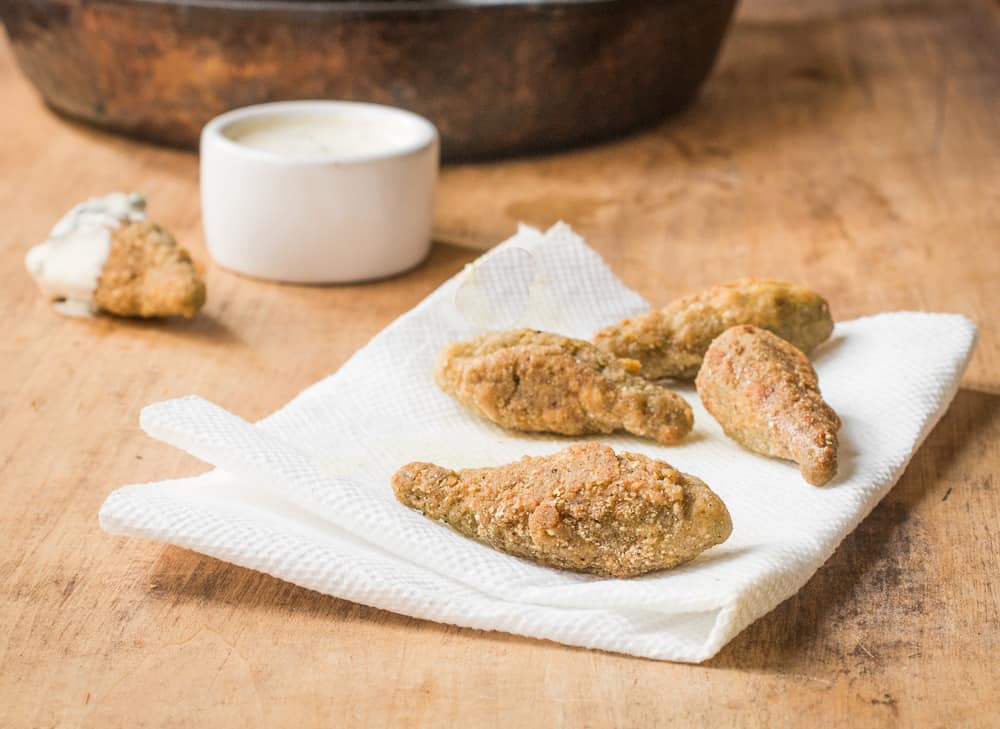
One of the best, literal wild vegetables is hitting it's peak right now at the end of summer: delicious common milkweed pods of Asclepias syriaca (as well as a select few others like A. speciosa, that I haven't tried).
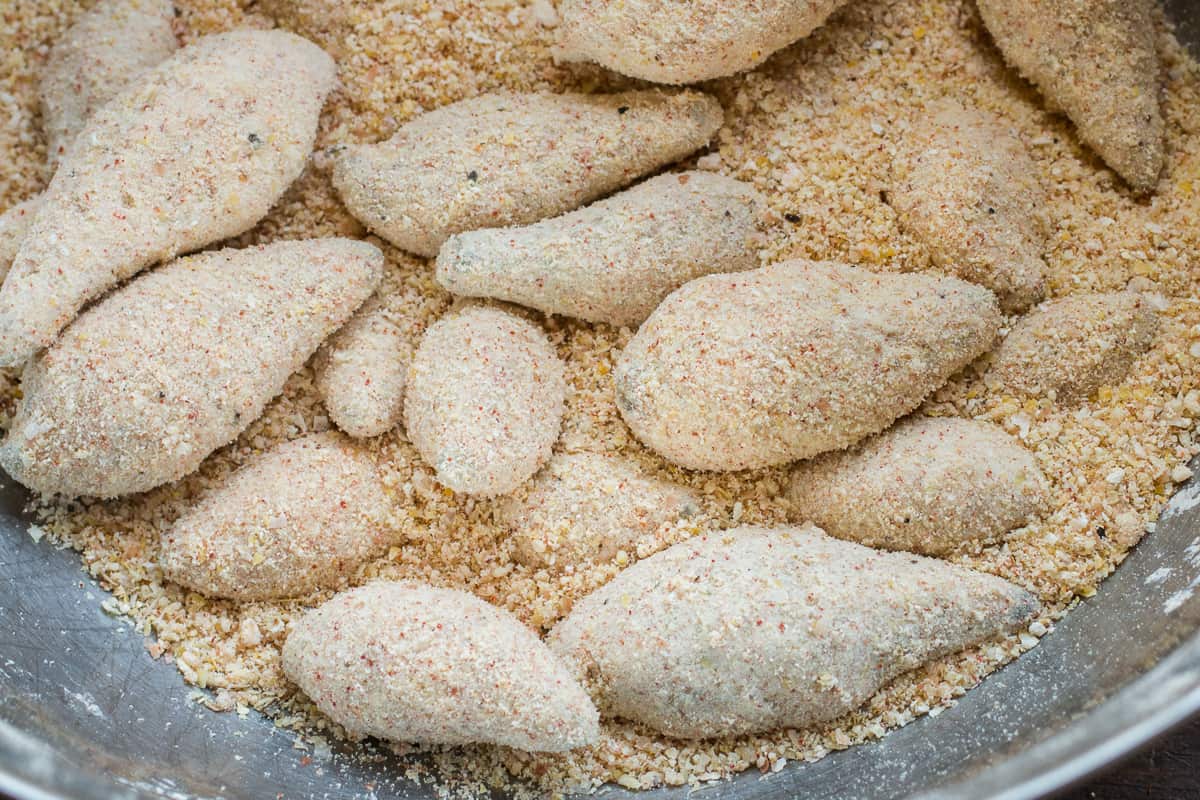
Milkweed gives a lot of gifts: shoots, leaves (mostly for purees or as a colorant) young flower buds and their whole apical meristems, as well as flowers that North American Indigenous peoples were said to dry as a food crop.
All of those parts are good, but the pods are my favorite. I love my leafy greens, but there's just something about a feral vegetable that's so interesting and fun to cook with. I mean, just look at them! They're so wee. And, they're mild, tasting, tender and delicious, especially when you soak them in buttermilk and fry them crisp dredged with cornmeal, a la okra.
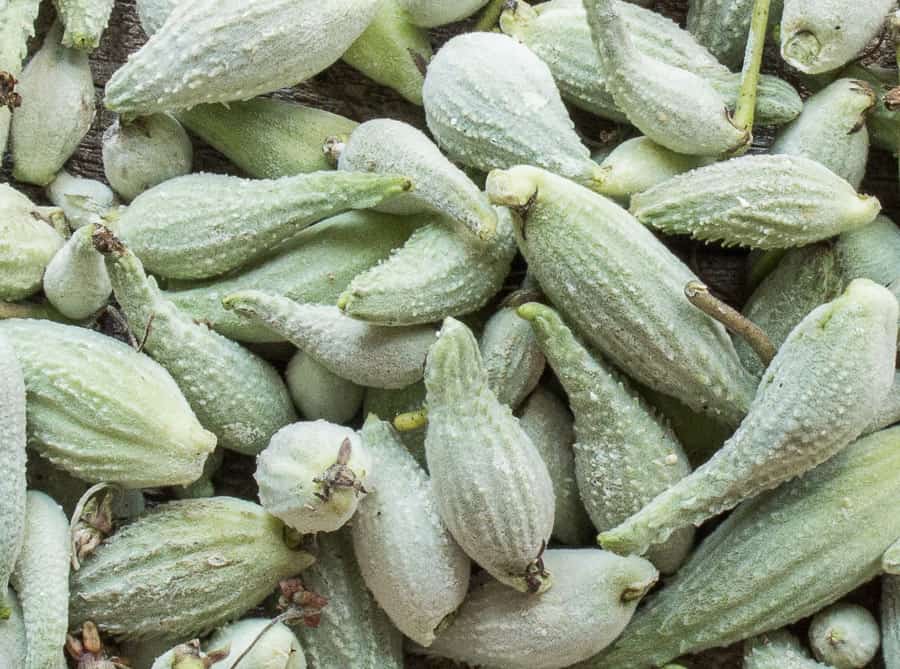
The texture, as long as they're around 1-2 inches long, or even a teeny bit larger, after cooking, is a bit like okra, and I've described on menus as wild okra since I bristle at putting the term "weed" anything on a menu, at least menus for civilians (the general populace not familiar with eating wild plants).
Just like okra, milkweed pods love to be fried, and the preparation is really simple: take some roughly 1.5-2 inch pods, blanch them in boiling water for a couple minutes, drain well, cool, then soak in buttermilk or beaten egg.
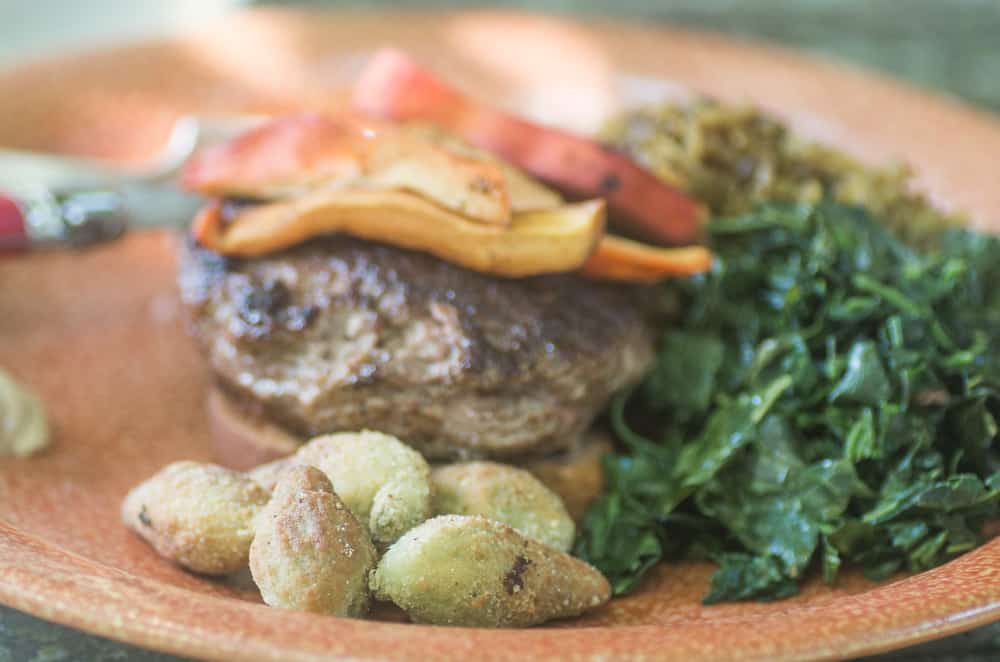
From there, you take them and dredge in cornflour/fine cornmeal mixed with a few spices (lots of possibilities here, and I'll go over a few of my favorites) and either shallow or deep fry them and serve with a summer-y dip, or for the ascetic: all by themselves with hot sauce and crunchy salt on the side. It's one of the wild treats I look forward to every year around this time.
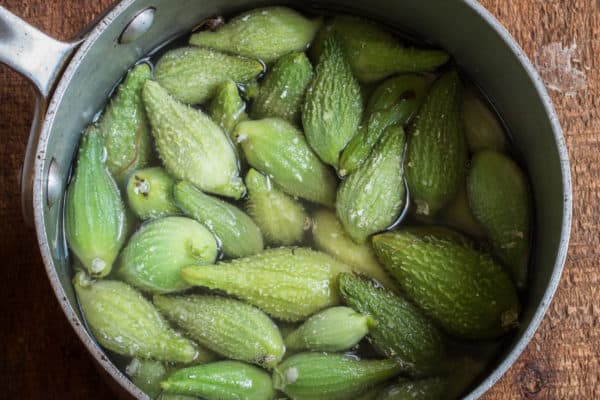
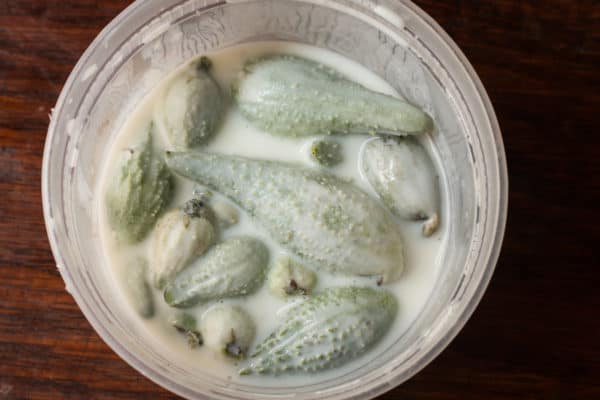
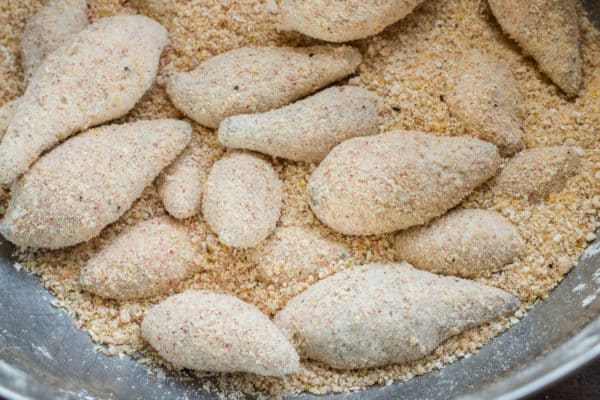
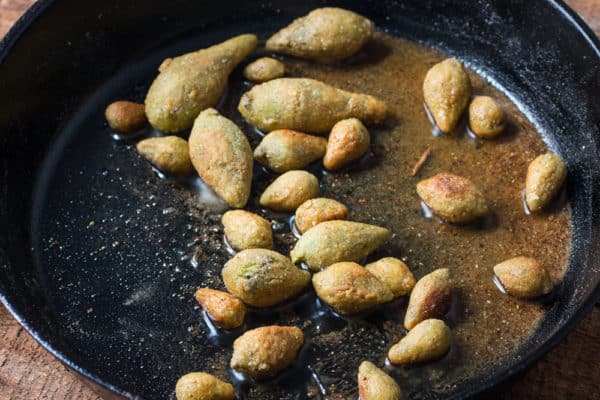
It's ok to eat milkweed pods, really
As most of us know, humans aren't the only ones that enjoy milkweed. Monarch butterflies also love milkweed pods too, as well as plenty of other parts of the plant. As much as I love sharing the joy of eating milkweed pods, I don't do it too much publicly.
Besides counting on milkweed pods to be delicious, the other part of the equation you can count on is that people are quick to appoint themselves milkweed police, and insist that if you harvest milkweed pods, (or any part of the plant for that matter) you're personally responsible for any and all parts of monarch destruction, and that you're a bad, un-ethical forager, which simply isn't the truth.
Unless you're going around squishing monarchs with a fly swatter as you pick, there's nothing wrong with harvesting a few milkweed pods to eat.
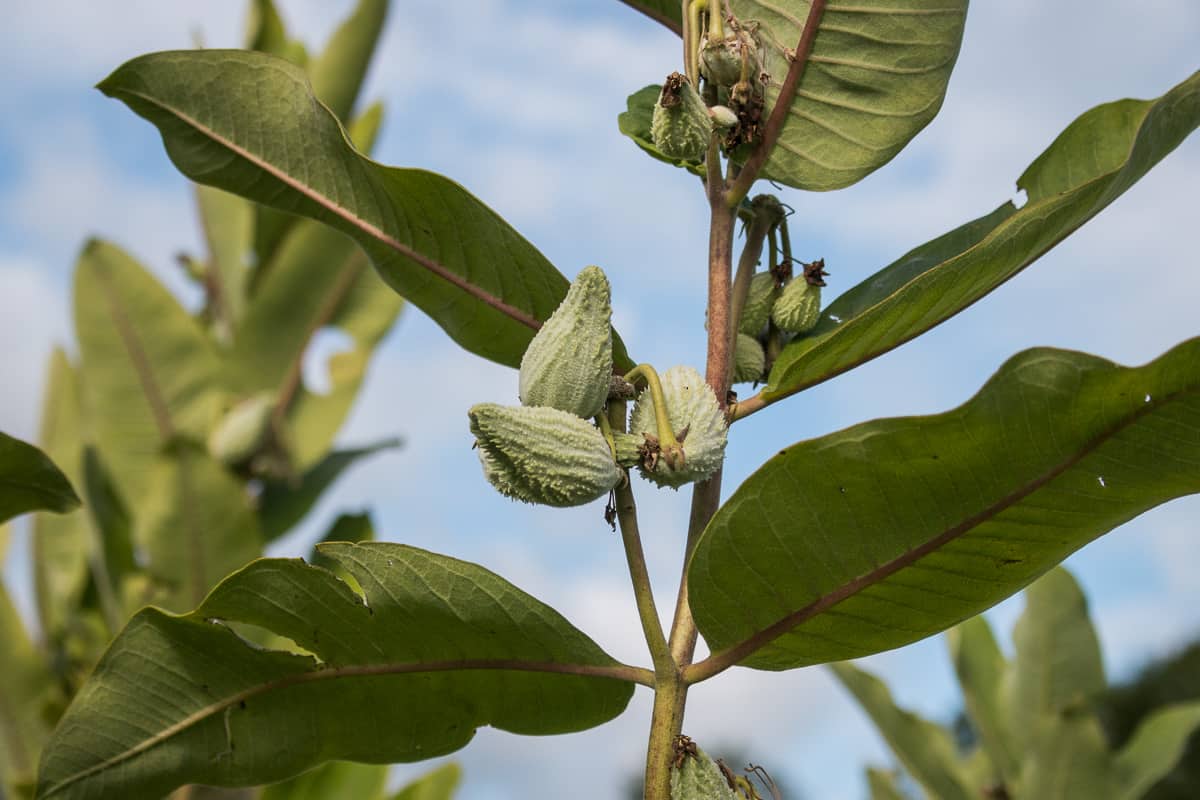
Milkweed stands produce an incredible amount of edible biomass--far more food than you, or a bunch of your friends could likely eat in a large patch. The window for harvesting the pods in itself, also means it would be nearly impossible to harvest all of the pods, even if you tried, since once they're over 2 inches long, they'll be tough and inedible for humans, but perfect for monarchs.
Preventing milkweed propagation as you're eating the fruit that contains seeds I see as a moot point too, since the plant also reproduces via rhizomes under the ground.
The last point to consider as I see it, is that milkweed isn't some obscure rare thing, it's ubiquitous where I and a lot of other people live, and, it can also be planted in a garden. Just think how much food we could share if everyone planted a couple milkweed plants in their gardens, or helped spread seeds when they see them on a walk in the fall?
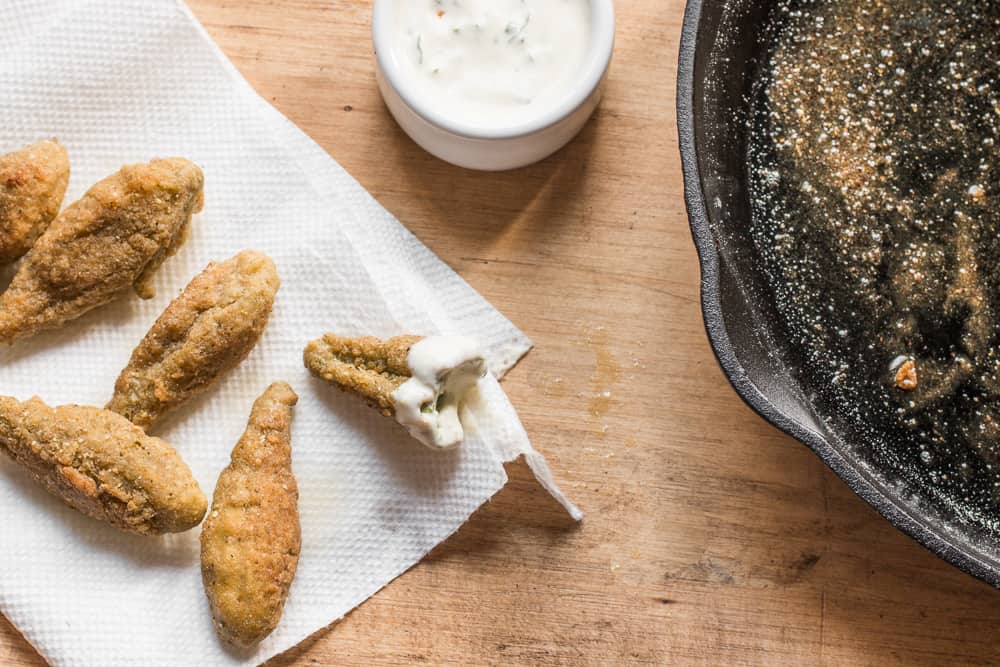
Milkweed Allergy
In this recipe, milkweed pods undergo blanching as a precautionary measure to prevent potential digestive discomfort that may arise when consuming them in their raw state. Milkweed is a traditional food, but it's worth noting that some individuals may exhibit allergic reactions to milkweed pods, irrespective of the cooking method employed.
I'm including serving proportions here as a conservative and moderate guideline – approximately 1 ounce per person for those trying it for the first time. Once you determine that milkweed pods are agreeable to your palate (and equally important, to those you may be sharing the meal with), you can consider slightly larger servings if desired.
Related Posts
Cornmeal Fried Milkweed Pods
Ingredients
- 4 oz young milkweed pods in the range of 1-2inches
- Finishing salt
- Buttermilk as needed for soaking the pods about 1 cup
- Cooking oil as needed for sauteing/frying
- 1 cup fine cornmeal you can add up to 25% coarse cornmeal for extra crunch here if you like
- Good pinch of spices, like paprika or curry powder see note
- Dipping sauce(s) for serving such as hot sauce, or a mayonnaise or yogurt based dip like ranch, etc
Instructions
- Mix the corn meal and spices.
- Blanch the pods in boiling water for 2 minutes, then remove, cool, and mix with the buttermilk. Allow the pods to sit for an hour or two (they can be fried right away if you have to) then remove the pods with a slotted spoon and toss with the cornmeal to coat.
- Tap off excess cornmeal, and transfer the pods to a hot, oiled pan and cook until golden, turning or tossing occasionally and adding extra oil as needed if the pan gets dry (you can also deep fry them).
- Let the milkweed pods cool on a paper towel to drain excess oil, sprinkle lightly with salt, and allow to cool a bit before eating since they’ll be very hot. Serve with hot sauce or your favorite dip on the side.
Notes
Milkweed pods are blanched here to prevent tummy rumbles, which can happen to some people if they're cooked from raw. But some people can be allergic to them no matter how they're cooked. This recipe is so simple that you don't need a recipe, but I'm including suggested proportions here as an example of what a conservative, modest serving looks like-1 oz per person if it's your first time. Once you find that they agree with you (and more importantly, your family or others) you can eat slightly larger amounts if you like. Spices
A generous pinch (½-1 teaspoon) of spices are usually good for a cup of cornmeal. If you want to serve them with something minimalist, like hot sauce, season the cornmeal more heavily than if you're serving with a mayonnaise or yogurt based dip, since those flavors are stronger. Some people might like to add onion or garlic powder, but use a light hand with that stuff since it gets offensive fast. Here's a few options I like:
- A generous pinch of curry powder
- Paprika + cayenne
- Ground dried ramp leaves and black pepper
- Cumin and chili powder

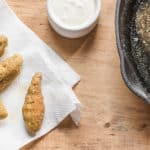
Shannon
Hello,
Foraging milkweed can be harmful to the environment - they're an incredibly essential food source for monarch butterflies. In many parts of North America, it's arguably environmentally irresponsible to forage it.
Is there any way to forage milkweed responsibly in a way that won't harm monarchs?
Alan Bergo
Hi Shannon, this is something I'm used to speaking to, it's just slightly beyond the scope of this post as I cover it in my more comprehensive guide to foraging milkweed. There's a long-form essay answering this exact question in my book too. Milkweed is a valuable food for monarchs, and it's also a traditional food. One thing I encourage people to keep in mind is that the more milkweed people plant in their yards, the more food there is for both humans, and monarchs. Monarchs also eat different parts of milkweed at different stages than is edible for humans. I'd encourage you to read my article on it, as well as my mentor's (foraging author Samuel Thayer) piece on them in his first book The Foragers Harvest.
Shel Lynn
Poison control center here in the US just states that common milkweed has attacks and that can be quite dangerous. Is this way you recommend blanching them first?
Alan Bergo
There's compounds in milkweed that need to be cooked. Thorough cooking makes them safe for most people, but, there are some who can still have a reaction if the pods aren't blanched before cooking. Blanching, and then frying is the most tested, trustworthy method of cooking if serving to the general public, since, if even one person gets sick, you have a problem.
Dorothy
These were so good. The whole family liked them. Kinda like vegetarian wings or nuggets.
Krista
These were fabulous! Blanched pods 1.5 minutes, soaked in buttermilk 1.5 hours, dipped in blue corn masa harina spiced with sweet paprika and hot Indian red chili pepper and black pepper, fried in generous amount canola oil, finishing salt and it was almost like there was melted cheese in the center like a good popper.
Alan Bergo
Glad they worked for you. I love these.
Amber Becker
Love these - turned out delicious! Say, you show a photo of pickled milkweed pods, but I couldn't find a recipe. Can you advise? I'm really hoping to pickle a jar or 2 soon!
Elizabeth F
Awesome guidance! Looking forward to picking the pods in our yard - this recipe sounds easy and delicious! Thanks for the tips on the pods sizes!
Alan Bergo
Yep, easy and delicious. Have fun and remember to only get pods 2 inches or less.
Mike
Alan (or anyone else who may know):
I had no idea Asclepias were edible. Out here in California, it's rare to see anything other than Asclepias curassavica, which is the most-often grown variety in gardens. Our natives here are A. californica and A. fascicularis but they're rare to see. I'm nursing two plants of A. speciosa, that haven't yet bloomed in two years. A. syriaca I have not seen here (it's an eastern American native). Does anyone know if any of these (aside from the noted syriaca and speciosa) are edible?
Alan Bergo
I can’t speak to any but A. syriaca and exaltata personally, and exaltata I thought was inferior in flavor and texture. You could probably sample other species if you blanch them first, but your on your own there. If you do, let me know.
Erik
Curassavica is very high in cardenolides and definitely poisonous. I suspect CA natives other than speciosa would be as well (Deep South milkweeds are all at least moderately toxic: as weather gets warmer, herbivore pressure tends to increase, and in dry climates like most of California, as well as Florida sandhills, it is more expensive for the plants to replace lost tissues, so plants tend to invest more in defensive chemistry to keep their predators away), but you could look for a local ethnobotany or a CA based foraging book. I know the South American vining milkweed, Morrenia odorata, is edible (eattheweeds.com has an article on it), but it is invasive from Central Florida southwards and was especially despised in Citrus groves (before HuaLongBing wiped them out and made the point a little moot), so it might also be illegal as an invasive in California.
Stepb
Very easy to make. We used "Slap Ya Mama" for the spice and it was great. We found hot sauce to be too much, but loved them with ranch. Thanks for giving us something new to try!
Alan Bergo
I should make a note about hot sauce being mild hot sauce, something like Franks Red Hot. Tobasco or stronger ones would be too much.
Joys Chow
I love your blog - gathering food in nature; learning to recognized them. I looked up millkweed plant on the internet and there are so many varieties! are there any that are not edible? I live in the British Columbian coastal region. Do you have any recommendations?
Alan Bergo
Hi. Common milkweed is what I'm referring to specifically here: Asclepias syriaca. The pods of Asclepias speciosa can also be eaten, but I've only eaten common milkweed. Most others (butterfly milkweed etc) should be avoided.
Dennis
I did this today. Only 4 pods as I wasn’t sure. But they turned out great! Crispy and with a mild taste. I used cumin and chilli powder and dipped in ranch dressing. Delicious!
Dennis
One question. Do you think they could be harvested, blanched and then frozen for later use?
Alan Bergo
Hi Dennis, glad you liked them. Yes, you can freeze them like that.
Carla Beaudet
You know, "weed" is sort of the N-word of the plant kingdom; it reflects a prejudice and doesn't refer to any actual reality. So I don't particularly like it either. That said, "milkweed pods" on a menu wouldn't put me off, but I'm already singing in the forager's choir. When trying to up-class an ingredient, it makes sense to look at the French word. How about "laiteron"? Crisp-fried laiterons; I can see that on a menu.
Alan Bergo
I know, milkweed pods doesn't really sound all that bad, but I definitely have a tic about it. Laiterons is nice.
Sam Schaperow
Hi Alan. Do you truly believe balancing is beneficial in this recipe? I assume you do. But why?
Also, interesting. Your pods are up to 2" now? I'm in zone 6b, though. You?
Alan Bergo
Hey Sam, I’m assuming you mean blanching there, and yes, I do. I like the pods cooked from raw, but some people will find the taste a bit strong raw, and others will can get GI issues if they aren’t blanched (trust me, I have the turf-burning emails to prove it). Blanching also seems to help them soak up less oil, which can concentrate in the pods and burst into your mouth cooked from fresh. Pods in the Twin Cities are near finished here, in Wisconsin’s valleys they’re about perfect.
Dianagenta
Heya! I just saw my pods are just ready to pick, and came across your page looking for how to prepare them. I'm in Minneapolis too! This will be my first time trying them: had 4 or 5 volunteers in my garden last year and this year there are a *lot* more, enough to work with. So excited!
Alan Bergo
Enjoy, remember two inches is the ideal length. Crazy that I'm still picking green buds here in WI.
Carla Beaudet
Huh. Here in Green Bank, WV, our pods have not even emerged, really. We're at 3000', but our winters are not nearly what yours are.
Jade
Next year at the top of my wild harvesting list!